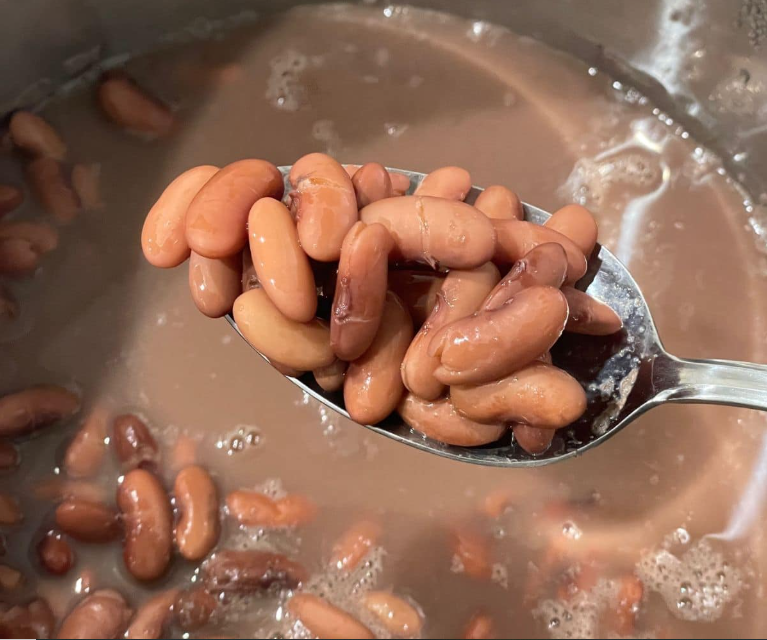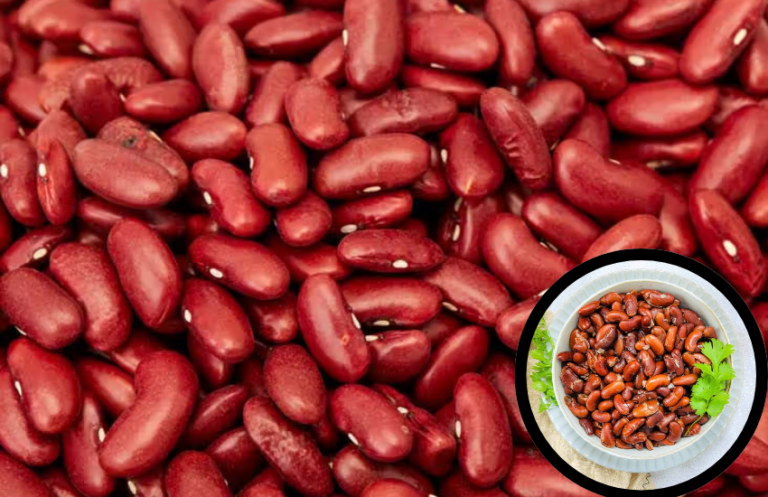Kidney beans are more than just a staple ingredient in many cuisines around the world—they are a nutritional powerhouse loaded with health benefits. These versatile legumes are an essential part of a balanced diet, thanks to their high protein, fiber, and nutrient content. From chili dishes to salads and stews, kidney beans add flavor, texture, and a wealth of nutrients to meals.
In this article, we will explore the origin, nutritional value, health benefits, culinary uses, and storage tips for kidney beans. Whether you’re a seasoned cook or someone just discovering these legumes, kidney beans deserve a permanent spot in your pantry.
Kidney Beans: Profile and Overview
Here’s a detailed profile of kidney beans, including their origin, types, and nutritional highlights:
| Name | Kidney Beans |
|---|---|
| Scientific Name | Phaseolus vulgaris |
| Origin | Central and South America |
| Types | Red Kidney Beans, White Kidney Beans (Cannellini), Light Red Kidney Beans |
| Nutritional Content (per 100g cooked) | |
| Calories | 127 |
| Protein | 8.7g |
| Fiber | 6.4g |
| Carbohydrates | 22.8g |
| Fat | 0.5g |
| Key Vitamins | Folate, Vitamin B6 |
| Key Minerals | Iron, Magnesium, Potassium, Zinc |
| Common Uses | Stews, Salads, Soups, Rice Dishes |
The Origin and History of Kidney Beans

Kidney beans have their roots in Central and South America, where they have been cultivated for thousands of years. They are believed to have originated from Peru and were later introduced to Europe, Africa, and Asia through trade routes in the 16th century. The name “kidney bean” comes from their distinct shape, which resembles a human kidney.
Historically, kidney beans have been a dietary staple for their long shelf life and versatility in cooking. Cultures across the globe—particularly in Latin America, India, and parts of the Caribbean—integrated kidney beans into traditional dishes such as chili con carne, rajma, and red beans and rice.
The Nutritional Value of Kidney Beans
Kidney beans are packed with nutrients, making them an excellent addition to a healthy diet. Here’s a breakdown of their key nutritional components:
1. High in Protein
Kidney beans are an excellent source of plant-based protein, providing approximately 8.7 grams per 100 grams of cooked beans. This makes them a great choice for vegetarians and vegans looking to meet their daily protein needs.
2. Rich in Dietary Fiber
With 6.4 grams of fiber per 100 grams, kidney beans support digestive health and promote a feeling of fullness, which can help in weight management.
3. Low in Fat
Kidney beans are naturally low in fat, with less than 1 gram per serving. This makes them a heart-healthy choice for those looking to reduce fat intake.
4. Packed with Vitamins and Minerals
- Folate: Essential for red blood cell production and DNA synthesis.
- Iron: Supports oxygen transport in the blood.
- Magnesium and Potassium: Help maintain healthy blood pressure and muscle function.
- Zinc: Boosts immune function and promotes wound healing.
Health Benefits of Kidney Beans

The rich nutritional profile of kidney beans translates to numerous health benefits. Here are some of the key advantages of including kidney beans in your diet:
1. Supports Heart Health
The high fiber content in kidney beans helps reduce LDL cholesterol levels, promoting better cardiovascular health. Additionally, their magnesium and potassium content aids in maintaining healthy blood pressure.
2. Helps in Weight Management
Kidney beans are low in calories and high in protein and fiber, which can help curb appetite and reduce overall calorie intake. The slow-digesting carbohydrates in kidney beans also keep you feeling full for longer.
3. Improves Digestive Health
The dietary fiber in kidney beans supports a healthy gut by promoting regular bowel movements and preventing constipation. It also nourishes gut-friendly bacteria, contributing to a balanced microbiome.
4. Regulates Blood Sugar Levels
Kidney beans have a low glycemic index, which means they cause a slow and steady rise in blood sugar levels. This makes them an excellent choice for individuals with diabetes or those aiming to manage their blood sugar levels.
5. Boosts Energy Levels
The combination of complex carbohydrates, iron, and B vitamins in kidney beans provides a steady release of energy, making them ideal for active individuals or those recovering from illness.
Cooking with Kidney Beans
Kidney beans are a versatile ingredient that can be used in a wide variety of dishes. Here are some tips on how to prepare and use kidney beans in your cooking:
1. Soaking and Cooking
- Dry Kidney Beans: Soak dry kidney beans overnight to reduce cooking time and improve digestibility. After soaking, boil them for 45 minutes to an hour until tender.
- Canned Kidney Beans: Canned beans are pre-cooked and ready to use. Rinse them thoroughly under cold water to remove excess sodium.
2. Popular Dishes Featuring Kidney Beans
- Chili Con Carne: A hearty and spicy stew made with kidney beans, ground beef, and tomatoes.
- Rajma: A North Indian curry made with kidney beans, spices, and a tomato-based gravy.
- Salads: Add cooked kidney beans to salads for an extra protein boost.
- Soups and Stews: Kidney beans are a staple in many vegetable and meat-based soups.
3. Creative Uses
- Vegan Burgers: Mash kidney beans with spices and breadcrumbs to create plant-based burger patties.
- Hummus: Blend kidney beans with tahini, garlic, lemon juice, and olive oil for a unique twist on hummus.
How to Store Kidney Beans
Proper storage of kidney beans ensures they retain their flavor and nutritional value. Here’s how to store them:
Dry Kidney Beans
- Store dry beans in an airtight container in a cool, dry place.
- They can last up to 1 year when stored properly.
Cooked Kidney Beans
- Refrigerate cooked beans in an airtight container for up to 5 days.
- Freeze cooked beans in portion-sized bags for up to 6 months.
Canned Kidney Beans

- Keep unopened cans in a cool, dry place.
- Once opened, transfer the beans to an airtight container and refrigerate for up to 3 days.
Potential Concerns: Raw Kidney Beans
Raw kidney beans contain phytohemagglutinin, a natural toxin that can cause digestive discomfort if the beans are not cooked properly. To avoid this, always soak and cook raw kidney beans thoroughly before consuming them. Canned kidney beans, being pre-cooked, are safe to eat without additional cooking.
Fun Facts About Kidney Beans
- The red color of kidney beans comes from anthocyanins, antioxidants that help fight free radicals.
- Kidney beans are often used in vegetarian diets as a substitute for meat due to their high protein content.
- They are a primary ingredient in the famous Louisiana dish, red beans and rice.
Conclusion
Kidney beans are a versatile and nutrient-rich food that deserves a place in every kitchen. From their impressive nutritional profile to their myriad health benefits, kidney beans are a powerful ally in promoting overall wellness. Whether you’re preparing a comforting stew, a refreshing salad, or a hearty curry, kidney beans add both flavor and nutrition to your meals.
By incorporating kidney beans into your diet, you can enjoy their health-boosting properties while exploring a variety of delicious and creative recipes. With proper preparation and storage, these legumes can become a staple in your journey toward a healthier lifestyle.
For more update visit genius
